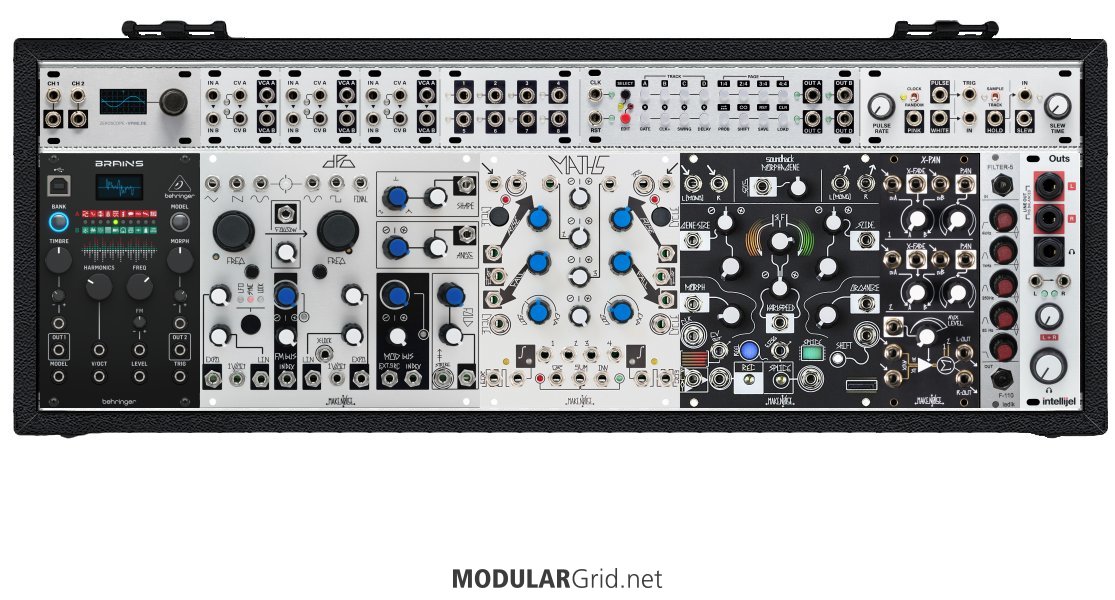1st real critique - don't post links to jpegs - post links to public racks - then we can click through and help you better
I'd also generally agree with scalebrain
cases under 6u/84hp are best suited for a single voice - as there is not enough space to comfortably add the support modules that that are needed and often overlooked by beginners - although not that bad - take the b-company module out & everything to the right of morphagene and you've got a better start - personally I would recommend a bigger case to start with - there's a good chance that by the time you fill this case you will have realised that this is not a rack that you want to patch that much and that in order to get there you need more utility modules (and probably that 2nd voice) and are buying another case - when you could have just bought the right one in the first place for less
nb there are different types of sequencer - steppy is a trigger sequencer - scales has a melodic sequencer, but looks a little fiddly to be honest - if this is how you intend to program 'tunes' then I would consider looking elsewhere
it's often better to start with modules (or functions) that you want and work to the case from there - instead of starting with the case
it's also often better to start as simple as possible and grow organically from there rather than planning racks that may or may not work for you
get a bigger case (intellijel are quite premium - look nice but expensive for what they are) and just get a sound source, a modulation source, a sound modifier and a way to play and a way to listen (a quad cascading vca such as veils is an excellent choice for this)
get the ones you like the look/sound of most - so for example: dpo, maths, morphagene, veils and a decent sequencer (preferably that does gates as well as v/oct and preferably with an internal clock)
next up you should look at more utility modules and a decent filter and then more modulation before a second voice
this ratio seems to scale well for modulars to me:
sound sources < sound modifiers < modulation sources < utilities (including sequencers and controllers)
"some of the best base-level info to remember can be found in Jim's sigfile" @Lugia
Utility modules are the dull polish that makes the shiny modules actually shine!!!
sound sources < sound modifiers < modulation sources < utilities

